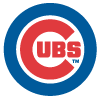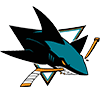The Rays phenom once again finds himself on the injured list after suffering a broken bone in his wrist, specifically one of the carpal bones.
The wrist is formed from the end of the radius and ulna and the eight carpal bones. These carpals come in a variety of shapes but are arranged in two distinct rows. The most frequently fractured of the carpals is the scaphoid. Padres shortstop Fernando Tatis continues to recover from surgery to address a scaphoid fracture.
Franco's injury involves a carpal bone of the opposite side of the hand, a bone known as the hamate. The hamate sits at the base of the pinkie and is distinguishable by its hook-like projection. The hook of the hamate helps form part of the carpal tunnel and serves as an anchor point for multiple ligaments and tendons. Unfortunately, its location leaves it vulnerable to injury, particularly when a player is at the plate. When a player grips their bat, the knob of the bat often rests on or near the hamate. If the batter makes awkward contact with a ball or the ground, the resulting stress can be transmitted through the hamate, potentially causing a fracture. Stress reactions or stress fractures can also occur in the hamate if the bone is subjected to routine stress while hitting.
Treatment options for a hamate fracture depends on the location of the break and the amount of associated displacement. Furthermore, the hamate's role as an attachment site often influences
The Rays phenom once again finds himself on the injured list after suffering a broken bone in his wrist, specifically one of the carpal bones.
The wrist is formed from the end of the radius and ulna and the eight carpal bones. These carpals come in a variety of shapes but are arranged in two distinct rows. The most frequently fractured of the carpals is the scaphoid. Padres shortstop Fernando Tatis continues to recover from surgery to address a scaphoid fracture.
Franco's injury involves a carpal bone of the opposite side of the hand, a bone known as the hamate. The hamate sits at the base of the pinkie and is distinguishable by its hook-like projection. The hook of the hamate helps form part of the carpal tunnel and serves as an anchor point for multiple ligaments and tendons. Unfortunately, its location leaves it vulnerable to injury, particularly when a player is at the plate. When a player grips their bat, the knob of the bat often rests on or near the hamate. If the batter makes awkward contact with a ball or the ground, the resulting stress can be transmitted through the hamate, potentially causing a fracture. Stress reactions or stress fractures can also occur in the hamate if the bone is subjected to routine stress while hitting.
Treatment options for a hamate fracture depends on the location of the break and the amount of associated displacement. Furthermore, the hamate's role as an attachment site often influences recovery as well. Surgery can involve a removal or a fixation with the latter more likely to preserve normal function of the wrist. Potential nerve issues can also arise following injury or surgery. Nerve damage here can result in decreased grip strength and a loss of sensation in the area.
Fortunately, these complications are rare and multiple MLB players have come back to play at high level following surgery to address a broken hamate. The list of players to sustain the injury is a Who's Who of hitters and include current players like Jose Ramirez, Giancarlo Stanton, Joey Gallo, as well as Hall-of-Famers like David Ortiz and Ken Griffey Jr. A 2020 study published in the American Journal of Sports Medicine revealed 81 percent of professional baseball players who underwent surgery for a hook of the hamate fracture returned to their prior level or to an increased level of play. However, there was a noted decline in batting average, OBP, and OPS.
Franco was scheduled for surgery on Tuesday with the team providing a five-to-eight-week window for recovery. This estimate is line with the same 2020 study that placed the average return to play timeline at 48 days. Taylor Walls will start at shortstop for now.
Check Swings
Yordan Alvarez: The Houston slugger has been placed on the 10-day IL with lingering inflammation in his right hand. The team has not yet revealed the root of the inflammation though the injury did occur on an isolated swing and continues to bother Alvarez every time he swings the bat. The issue sounds suspiciously like a hamate injury though there are several other injuries, including muscle strains, tendinitis, or tenosynovitis, which could result in prolonged inflammation in the hand. The team appears to be taking a proactive approach with his care and are hopeful he can return after the All-Star break.
Rafael Devers: Devers has missed three straight games for the Red Sox as he continues to nurse lower back soreness. The team is taking a cautious approach with Devers as they are slated to play a four-game series on the unyielding turf of Tropicana Field. He could still see time as a DH over the next few days but fantasy managers may want to make other plans for the rest of the week.
Mitch Garver: Garver's first season with Texas is over after he opted to undergo surgery to repair a torn flexor tendon in his right forearm. His recovery won't be as costly as it normally would be for a pitcher who undergoes a similar procedure and he should be ready to return to catching duties in time for Spring Training. Jonah Heim will remain the Texas starting catcher for the remainder of the year with Brad Miller likely to become the primary DH.
James McCann: The Mets veteran catcher is slated to miss multiple weeks after straining an oblique. Reports state the team is preparing for him to be sidelined through the first of August. The injury is McCann's second significant injury of the season after he missed time with a *drumroll* hamate fracture. Tomas Nido will be New York's top backstop despite prospect Francisco Alvarez now getting reps with Triple-A Syracuse.
Whit Merrifield: The Royals utilityman is expected to sit through the All-Star break after he was diagnosed with a bone bruise and sprain to the big toe of his right foot. The injury description seems to suggest he is dealing with turf toe, an injury that tends to linger. Don't be surprised if his absence extends beyond the break. In the meantime, look for Nicky Lopez and Emmanuel Rivera to see an uptick in playing time.
Tyler O'Neill: The Cardinals outfielder suffered a setback in his recovery, but it did not involve his strained hamstring. O'Neill was struck on the wrist by a stray pitch on Wednesday and subsequent testing revealed a torn wrist flexor tendon near his pinkie. The involved muscle is likely the flexor carpi ulnaris (FCU), a muscle that inserts into the pinkie and the pisiform, one of the aforementioned eight carpal bones. It doesn't sound like O'Neill is considering surgical intervention and he hopes to play through any associated pain. The accompanying swelling and inflammation has subsided but it remains unclear when O'Neill will be allowed to return to the active roster. He was cleared to resume his normal workouts, but it may be wise to scale back your expectations for the immediate future.
Bryan Reynolds: Pittsburgh placed Reynolds on the 10-day IL Monday with a strained right oblique. Most obliques strains require longer than the minimal 10 days out with the average time lost hovering around six weeks. The Pirates will likely use a platoon to cover the outfield while Reynolds sits.





































